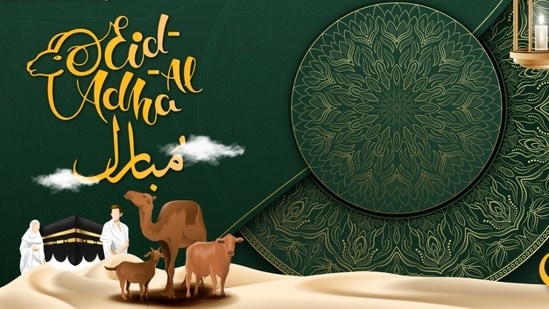Contents
Eid al-Adha, or Eid al-Adha as the Arabs call it, is known as the celebration of the completion of the Hajj. Muslims on this day remember the sacrifice of the Prophet Ibrahim, go to mosques and distribute alms to the poor and starving. This is one of the main religious celebrations, reminding Muslims of man’s devotion to God and the mercy of the Almighty.
When is Eid al-Adha in 2022
Eid al-Adha begins to be celebrated 70 days after Uraza Bayram, on the tenth day of the Muslim month of Zul-Hijja. Unlike many other dates, Eid al-Adha is celebrated for several days in a row. In Islamic countries, the celebration can drag on for two weeks (Saudi Arabia), somewhere it is celebrated for five days, and somewhere for three. In 2022, Eid al-Adha begins on the night of July 8-9, and the main celebrations are scheduled for Saturday, July 9.
history of the holiday
The name itself refers to the story of the prophet Ibrahim (Abraham), the events of which are described in sura 37 of the Koran (in general, much attention is paid to Ibrahim in the Koran). Once, in a dream, the angel Jabrail (identified with the biblical archangel Gabriel) appeared to him and conveyed that Allah orders to sacrifice his son. It was about the eldest son Ismail (Isaac appeared in the Old Testament).
And Ibrahim, despite mental anguish, nevertheless agreed to kill a loved one. But at the very last moment, Allah replaced the victim with a ram. It was a test of faith, and Ibrahim successfully passed it.
Since then, Muslims annually remember Ibrahim and the mercy of Allah. The holiday has been celebrated in Arab, Turkic and other Muslim countries since the first centuries of the existence of Islam. For most believers, Eid al-Adha is the main holiday of the year.
Holiday traditions
The traditions of Eid al-Adha are inextricably linked with the basic rules of Islam. Before the start of the holiday, it is necessary to perform a full ablution, special attention should be paid to clothing. Do not celebrate the holiday in dirty and untidy things.
On the day of Eid al-Adha, it is customary to congratulate each other with the exclamation “Eid Mubarak!”, Which in Arabic means “Blessed is the holiday!”.
According to tradition, a ram, a camel or a cow can be a victim for Eid al-Adha. At the same time, it is important to understand that the sacrificed livestock is primarily intended for alms, for treating relatives and friends.
Sut Kurban is a holiday
A key part of Eid al-Adha is the sacrifice. After the festive prayer, believers slaughter a ram (or a camel, a cow, a buffalo or a goat), remembering the feat of the prophet Ibrahim. At the same time, the ceremony has strict rules. If a camel is sacrificed, it must be five years old. Cattle (cow, buffalo) must be two years old, and sheep – one year old. Animals should not have diseases and serious deficiencies that spoil the meat. At the same time, a camel can be slaughtered for seven people. But if funds allow, it is better to sacrifice seven sheep – one sheep per believer.
Chairman of the Central Spiritual Administration of Muslims of Our Country, Supreme Mufti Talgat Tadzhuddin even earlier, he told the readers of Healthy Food Near Me about how to celebrate this holiday:
— The great feast will begin with morning prayers. Namaz will be performed in each of the mosques, after which the main part of the holiday will begin – the sacrifice. It is not necessary to take children to prayers.
It is supposed to give one third of the sacrificial animals to the poor or orphanages, distribute one third to guests and relatives, and leave another third to the family.
And on this day, it is customary to visit loved ones and pray for the dead. Also, believers should give alms.
When slaughtering an animal, it is impossible to show aggression. On the contrary, it should be treated with pity. In this case, the Prophet said, and Allah will have mercy on the person. The animal is brought to the place of slaughter carefully so as not to cause panic. Cut in such a way that other animals do not see it. And the victim herself should not see the knife. It is strictly forbidden to torture an animal.
Eid al-Adha in Our Country
As mentioned above, the very meaning of sacrifice is by no means associated with cruelty. In the villages, cattle and small cattle are slaughtered regularly, this is a vital necessity. On Eid al-Adha, they try to share the meat of a sacrificial animal with those who are less fortunate in life.
However, traditions may be different in cities, and therefore the sacrifice procedure is carried out according to special rules. If earlier it took place in the courtyards of mosques, then in recent years the administrations of cities have allocated special sites. Employees of Rospotrebnadzor and sanitary inspections are on duty there, who make sure that the meat is cooked in accordance with all the rules. Halal standards are strictly observed by the clergy.










